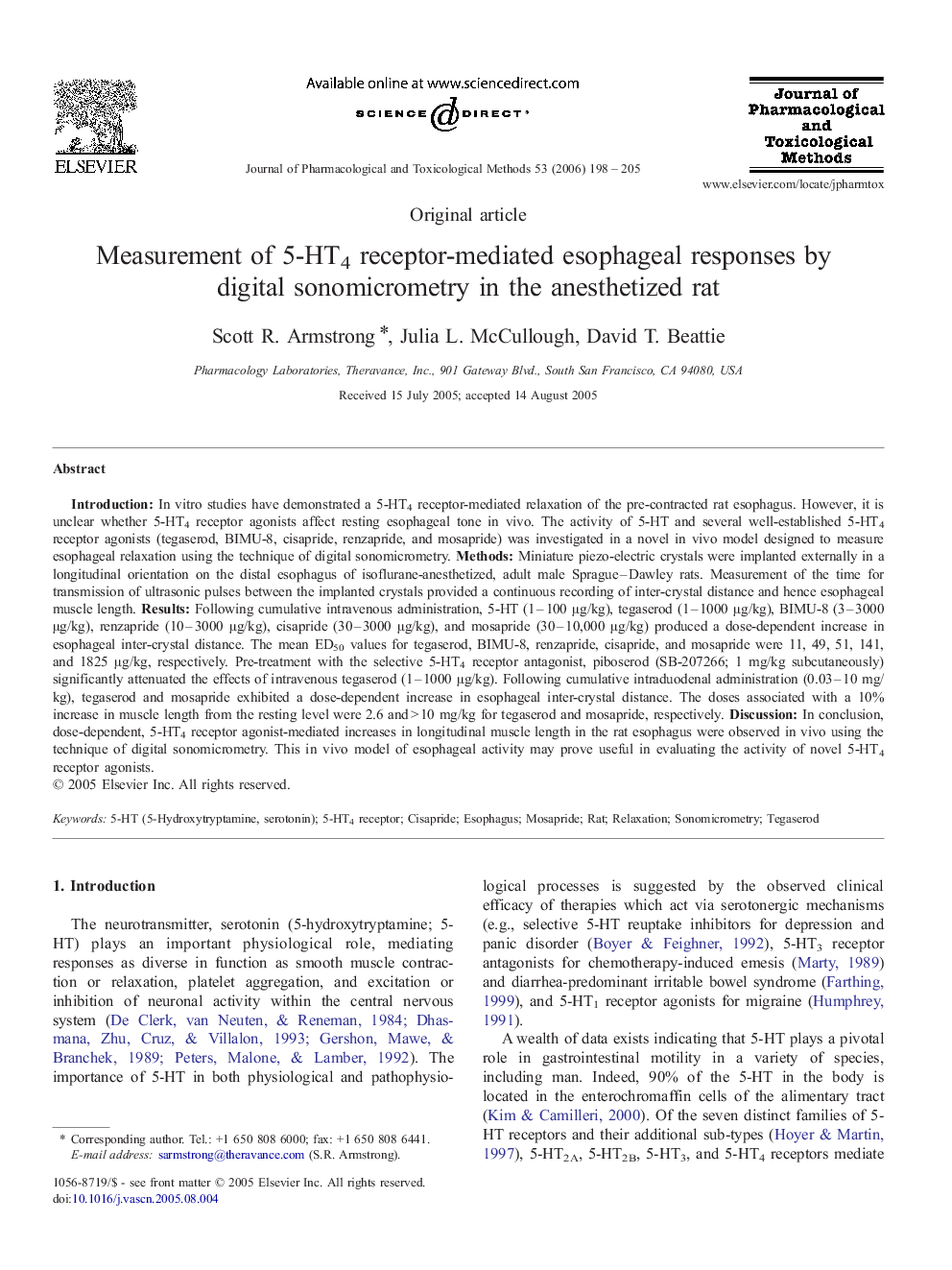| Article ID | Journal | Published Year | Pages | File Type |
|---|---|---|---|---|
| 2550306 | Journal of Pharmacological and Toxicological Methods | 2006 | 8 Pages |
IntroductionIn vitro studies have demonstrated a 5-HT4 receptor-mediated relaxation of the pre-contracted rat esophagus. However, it is unclear whether 5-HT4 receptor agonists affect resting esophageal tone in vivo. The activity of 5-HT and several well-established 5-HT4 receptor agonists (tegaserod, BIMU-8, cisapride, renzapride, and mosapride) was investigated in a novel in vivo model designed to measure esophageal relaxation using the technique of digital sonomicrometry.MethodsMiniature piezo-electric crystals were implanted externally in a longitudinal orientation on the distal esophagus of isoflurane-anesthetized, adult male Sprague–Dawley rats. Measurement of the time for transmission of ultrasonic pulses between the implanted crystals provided a continuous recording of inter-crystal distance and hence esophageal muscle length. Results: Following cumulative intravenous administration, 5-HT (1–100 μg/kg), tegaserod (1–1000 μg/kg), BIMU-8 (3–3000 μg/kg), renzapride (10–3000 μg/kg), cisapride (30–3000 μg/kg), and mosapride (30–10,000 μg/kg) produced a dose-dependent increase in esophageal inter-crystal distance. The mean ED50 values for tegaserod, BIMU-8, renzapride, cisapride, and mosapride were 11, 49, 51, 141, and 1825 μg/kg, respectively. Pre-treatment with the selective 5-HT4 receptor antagonist, piboserod (SB-207266; 1 mg/kg subcutaneously) significantly attenuated the effects of intravenous tegaserod (1–1000 μg/kg). Following cumulative intraduodenal administration (0.03–10 mg/kg), tegaserod and mosapride exhibited a dose-dependent increase in esophageal inter-crystal distance. The doses associated with a 10% increase in muscle length from the resting level were 2.6 and > 10 mg/kg for tegaserod and mosapride, respectively.DiscussionIn conclusion, dose-dependent, 5-HT4 receptor agonist-mediated increases in longitudinal muscle length in the rat esophagus were observed in vivo using the technique of digital sonomicrometry. This in vivo model of esophageal activity may prove useful in evaluating the activity of novel 5-HT4 receptor agonists.
